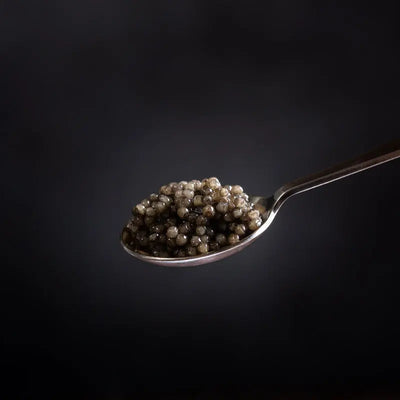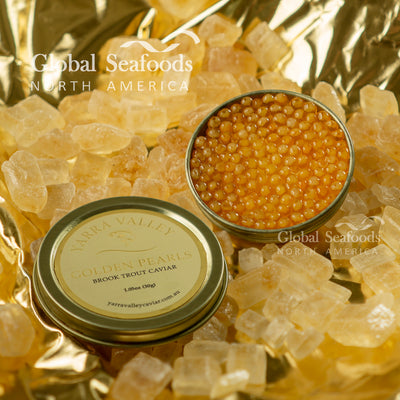+Shop Now
+Categories
- Abalone
- Ahi Tuna
- Alaskan King Crab Legs
- Alaskan Pollock
- Alaskan Sockeye Salmon
- Albacore Tuna
- Anchovy
- Anxiety Relief
- appetizer
- Atlantic Salmon
- Beluga Caviar
- Best Sushi
- black caviar
- black cod
- Blue crabs
- Bluefin Tuna
- Brain Function
- Branzino
- breakfast
- Calamari
- caviar
- Caviar Recipes
- Chef Knives
- Chilean Sea Bass
- Clams
- cocktail caviar
- Cod
- Coho Salmon Caviar
- collagen
- Cooking Methods
- crab
- Crab Balls
- Crab Cakes
- Crab claws
- crab meat
- Crab Recipes
- culinary tips
- decline-sturgeon
- Diver Scallops
- Dover Sole
- Dry Aged Fish
- Dungeness Crab
- Dungeness crab clusters
- Dungeness Crab Legs
- Exotic Shellfish Sampler
- Fish and Seafood
- fish oil
- Fish Sauce
- flat fish
- FLOUNDER FISH
- Focus
- Fresh Seafood Delivery
- Fresh Wild Alaskan Salmon
- Geoduck
- Gooseneck Barnacles
- Gourmet Seafood Platter
- haddock
- halibut
- Halibut Recipes
- hamachi
- Hamachi Recipe
- health
- healthy eating
- Ikura
- Japanese restaurants
- Jonah crab
- Jumbo Sea Scallops
- Kaluga Caviar
- kelp
- king crab
- King Crab Legs
- King Salmon
- kitchen
- Lingcod
- Live King Crab
- Live Lobsters for Sale
- Live Scallops
- Live seafood
- lobster
- Lobster Tail
- luxury food
- mahi mahi
- Marine Collagen
- Mollusk
- Monkfish
- Mussels
- New
- Nutrition
- octopus
- Opah
- Ora King Salmon
- Osetra Caviar
- Ossetra Sturgeon Caviar
- oysters
- Pacific Cod
- Pacific Hake
- Pacific Halibut
- Pacific Ocean
- Pacific Whiting
- Pacific Whiting Recipe
- Paddlefish Caviar
- Petite Oysters
- Petrale Sole
- Poke Tuna
- Pollock
- Pregnancy
- Premium Caviar Selection
- Recipe
- red caviar
- Red Crab
- rock fish
- Rockfish
- sablefish
- Sablefish (Black Cod) Recipes
- salmon
- Salmon Caviar
- Salmon lox
- Salmon Poke
- Salmon Recipes
- salmon roe
- Sardines
- Sashimi
- Sashimi-Grade Tuna
- Scallop
- scallops
- Scallops Recipe
- Sea Urchi Recipe
- sea urchin
- Sea Urchin Sushi
- sea weed
- Seafood
- Seafood Dishes
- Seafood Market
- Seafood Recipe
- Seafood Restaurants
- sevruga caviar
- shellfish
- Shrimps & Prawns
- Silver Salmon
- Smoked
- Smoked Salmon
- Smoked Tuna
- Snail Caviar
- snow crab
- Sole & Flounder Recipes
- Squid
- Steelhead
- Sturgeon Caviar
- Sustainable Seafood Choices
- Swordfish
- Tilapia
- Tilapia Fish
- Tobiko
- Trout
- tuna
- Tuna Recipe
- weathervane scallops
- white fish
- White Sturgeon
- White Sturgeon Caviar
- Whiting Fish
- Wild Caught Shrimp
- Yellowfin Tuna
- Yellowtail snapper
Roe vs. Caviar: Understanding the Difference and Indulging in Exquisite Delicacies
January 03, 2025

Roe vs. Caviar: Understanding the Difference
The world of gourmet seafood often brings two terms to the table: roe and caviar. While many use these words interchangeably, they represent distinct culinary treasures. Understanding the difference between roe and caviar can elevate your appreciation for these luxurious delicacies.
In this comprehensive guide, we’ll explore their unique origins, flavors, and nutritional benefits, and offer insights into serving and enjoying them like a true gourmand.
What Is Roe?
Roe refers to the eggs of any fish or marine animal. It serves as the foundation for all caviar but encompasses a broader spectrum. Some common types of roe include:
- Salmon Roe (Ikura): Known for its vibrant orange color and salty flavor.
- Trout Roe: Smaller, mildly flavored pearls with a delightful pop.
- Flying Fish Roe (Tobiko): Often used in sushi for its colorful appearance and crunchy texture.
Benefits of Roe
- Nutritional Powerhouse: Packed with omega-3 fatty acids, protein, and essential vitamins.
- Affordable Gourmet Option: Roe provides a gateway to luxury dining without the price tag of premium caviar.
What Is Caviar?
Caviar specifically refers to roe harvested from sturgeon species, such as Beluga, Ossetra, or Sevruga. Unlike other roe, caviar undergoes a meticulous salting process called malossol, which preserves its delicate texture and flavor.
Quote: "Caviar is not just food; it's an experience that defines sophistication," says Chef Thomas Keller.
Characteristics of Caviar
- Pearl Size and Texture: Smooth, velvety pearls that burst with a luxurious briny flavor.
- Rich Heritage: Historically associated with royalty and opulence.
Roe vs. Caviar: Key Differences
| Feature | Roe | Caviar |
|---|---|---|
| Definition | Eggs of any fish or marine animal | Roe exclusively from sturgeon species |
| Price | Generally affordable | Premium-priced luxury |
| Flavor | Varies widely by species | Nutty, buttery, and briny |
| Uses | Versatile in sushi, sauces, and appetizers | High-end garnishes and standalone delicacy |
Nutritional Benefits of Roe and Caviar
Both roe and caviar are rich in nutrients that support overall health:
- Omega-3 Fatty Acids: Enhance heart health and cognitive function.
- Vitamin B12: Boosts energy and supports red blood cell production.
- Selenium and Iron: Strengthen immunity and promote vitality.
How to Serve Roe and Caviar
Serving Roe
- Sushi and Sashimi: Adds texture and flavor to rolls.
- Garnish for Canapés: Elevates hors d'oeuvres with vibrant color.
- In Salads or Pasta: Adds depth and brininess to recipes.
Serving Caviar
- Traditional Blini: Pair with crème fraîche for a classic experience.
- On Toast Points: Highlight the buttery texture of caviar.
- With Champagne or Vodka: Complements the subtle richness of the pearls.
Explore more pairing ideas on our YouTube Channel.
Where to Buy Roe and Caviar
For the best quality and authenticity, shop with trusted sellers like Global Seafoods. Discover our curated selections:
Shop affordable roe options:
Storing Roe and Caviar
Proper storage preserves the flavor and quality of your delicacies:
- Refrigeration: Keep at 28°F to 32°F.
- Consume Quickly: Fresh roe and caviar should be eaten within 2–3 days of opening.
- Avoid Freezing: Freezing alters texture and diminishes flavor.
FAQs: Roe vs. Caviar
Q: Why is caviar more expensive than roe?
A: The rarity of sturgeon species, labor-intensive processing, and luxury branding contribute to caviar’s high cost.
Q: Can roe be used as a substitute for caviar?
A: Yes, roe offers a similar visual appeal and flavor profile, though it lacks the exclusivity of caviar.
Q: Are there sustainable options for caviar?
A: Absolutely! Opt for farm-raised sturgeon caviar from reputable sources to ensure environmental sustainability.
Conclusion: Celebrating the Best of Both Worlds
Whether you’re savoring vibrant salmon roe or indulging in luxurious Ossetra caviar, each offers a unique culinary journey. Understanding their differences allows you to appreciate their origins, flavors, and cultural significance.
For the finest roe and caviar selections, visit Global Seafoods. Elevate your dining experience and indulge in the ultimate gourmet treat today.
Call to Action:
Experience the perfect harmony of roe and caviar and unlock a world of gourmet possibilities.
Related Products
Share:
Also in News

The Boiled Crab in Popular Culture: From Cajun Cuisine to Trendsetting Restaurant Phenomenon
June 27, 2025
From spicy Cajun-inspired seafood boils to hands-on dining experiences, The Boiled Crab has left a unique mark on popular culture. Discover its cultural roots and culinary influence.

Boiled Crab for Game Night: Everything You Need for a Perfect Seafood Party
June 27, 2025
Take your game night to the next level with a Boiled crab party. Learn the best recipes, cooking tips, and hosting hacks for a memorable seafood feast.

Boiled Crab for Date Night: A Romantic Guide to the Perfect Seafood Feast
June 27, 2025
Make your next date night unforgettable with a romantic Boiled crab experience. This guide covers everything you need to know, from ambiance to the best crab varieties.
+Shop Now
+Categories
- Abalone
- Ahi Tuna
- Alaskan King Crab Legs
- Alaskan Pollock
- Alaskan Sockeye Salmon
- Albacore Tuna
- Anchovy
- Anxiety Relief
- appetizer
- Atlantic Salmon
- Beluga Caviar
- Best Sushi
- black caviar
- black cod
- Blue crabs
- Bluefin Tuna
- Brain Function
- Branzino
- breakfast
- Calamari
- caviar
- Caviar Recipes
- Chef Knives
- Chilean Sea Bass
- Clams
- cocktail caviar
- Cod
- Coho Salmon Caviar
- collagen
- Cooking Methods
- crab
- Crab Balls
- Crab Cakes
- Crab claws
- crab meat
- Crab Recipes
- culinary tips
- decline-sturgeon
- Diver Scallops
- Dover Sole
- Dry Aged Fish
- Dungeness Crab
- Dungeness crab clusters
- Dungeness Crab Legs
- Exotic Shellfish Sampler
- Fish and Seafood
- fish oil
- Fish Sauce
- flat fish
- FLOUNDER FISH
- Focus
- Fresh Seafood Delivery
- Fresh Wild Alaskan Salmon
- Geoduck
- Gooseneck Barnacles
- Gourmet Seafood Platter
- haddock
- halibut
- Halibut Recipes
- hamachi
- Hamachi Recipe
- health
- healthy eating
- Ikura
- Japanese restaurants
- Jonah crab
- Jumbo Sea Scallops
- Kaluga Caviar
- kelp
- king crab
- King Crab Legs
- King Salmon
- kitchen
- Lingcod
- Live King Crab
- Live Lobsters for Sale
- Live Scallops
- Live seafood
- lobster
- Lobster Tail
- luxury food
- mahi mahi
- Marine Collagen
- Mollusk
- Monkfish
- Mussels
- New
- Nutrition
- octopus
- Opah
- Ora King Salmon
- Osetra Caviar
- Ossetra Sturgeon Caviar
- oysters
- Pacific Cod
- Pacific Hake
- Pacific Halibut
- Pacific Ocean
- Pacific Whiting
- Pacific Whiting Recipe
- Paddlefish Caviar
- Petite Oysters
- Petrale Sole
- Poke Tuna
- Pollock
- Pregnancy
- Premium Caviar Selection
- Recipe
- red caviar
- Red Crab
- rock fish
- Rockfish
- sablefish
- Sablefish (Black Cod) Recipes
- salmon
- Salmon Caviar
- Salmon lox
- Salmon Poke
- Salmon Recipes
- salmon roe
- Sardines
- Sashimi
- Sashimi-Grade Tuna
- Scallop
- scallops
- Scallops Recipe
- Sea Urchi Recipe
- sea urchin
- Sea Urchin Sushi
- sea weed
- Seafood
- Seafood Dishes
- Seafood Market
- Seafood Recipe
- Seafood Restaurants
- sevruga caviar
- shellfish
- Shrimps & Prawns
- Silver Salmon
- Smoked
- Smoked Salmon
- Smoked Tuna
- Snail Caviar
- snow crab
- Sole & Flounder Recipes
- Squid
- Steelhead
- Sturgeon Caviar
- Sustainable Seafood Choices
- Swordfish
- Tilapia
- Tilapia Fish
- Tobiko
- Trout
- tuna
- Tuna Recipe
- weathervane scallops
- white fish
- White Sturgeon
- White Sturgeon Caviar
- Whiting Fish
- Wild Caught Shrimp
- Yellowfin Tuna
- Yellowtail snapper
Shop Now
Main
News & Updates
Sign up to get the latest on sales, new releases and more…
© 2025 Global Seafoods North America.










